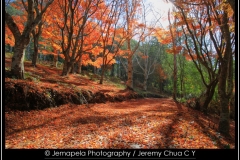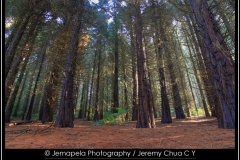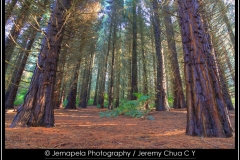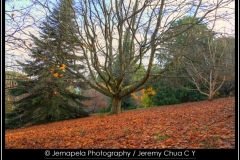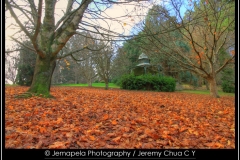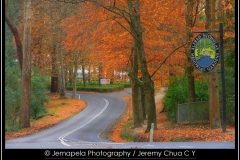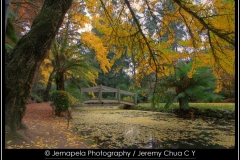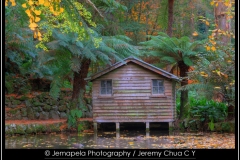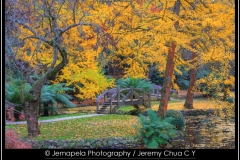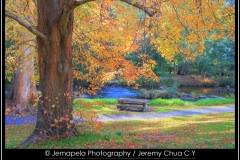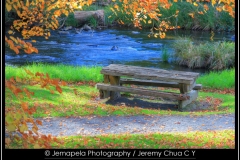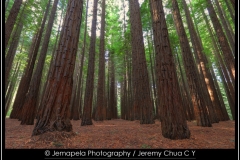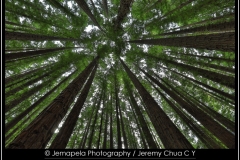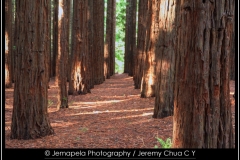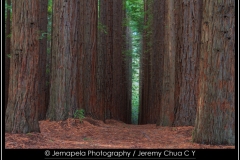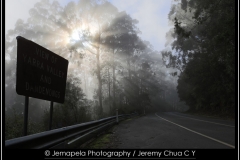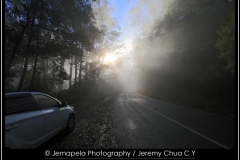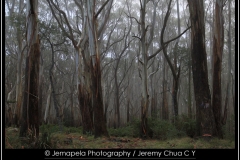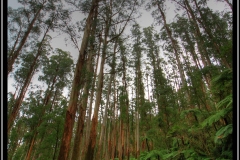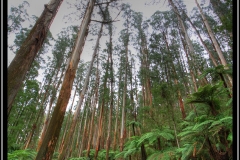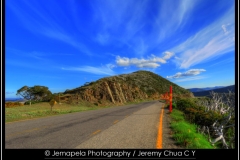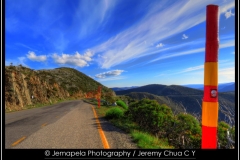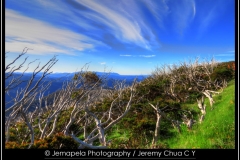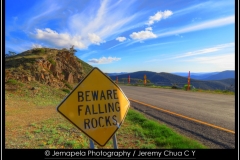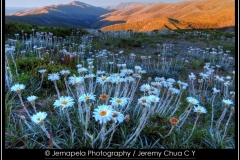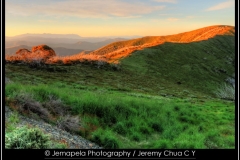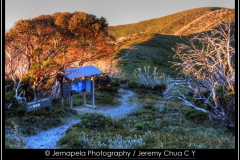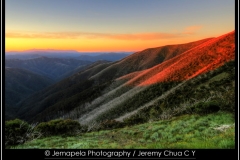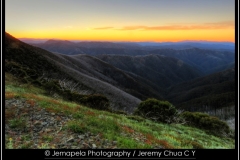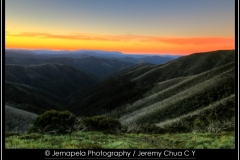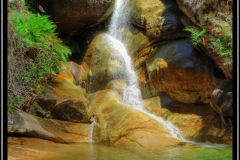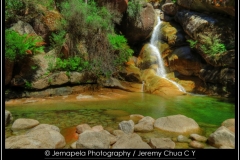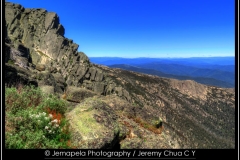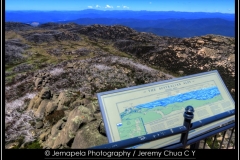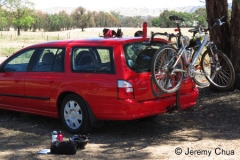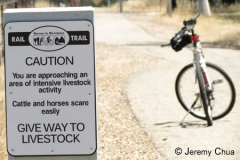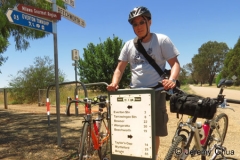Jemapela Photography
In May 2018, during late autumn, I drove to Olinda and Sherbrooke on Mount Dandenong (about 45km from Melbourne). I came here a few times to photograph the orange and red leaves of the season.
In June and July 2018, during winter, I drove eastwards out of Melbourne to East Warburton (about 80km from Melbourne), Mount Donna Buang (about 90km from Melbourne), Black Spur in Fernshaw and Steavenson Falls in Marysville (about 100km from Melbourne). Using a camera and lens with gloves on was far from easy and the cold made it a bit painful.
In August 2018, still during winter, I drove as far as to Mount Hotham (about 390km from Melbourne). This road trip was planned to coincide with the annual 2-day sled dog race at the alpine village of Dinner Plain, but despite leaving home at 4am, I arrived too late on the second day to catch any of the final race action. Apart from painful freezing fingers, my toes were also painfully freezing in wet boots soon after walking in snow. The last time I was here on Mount Hotham was in December 2012 during summer.
These road trips were an opportunity for me to unwind, appreciate the great outdoors which I really should do more, and play with my newer, second-hand but still discontinued Canon EOS 7D, and also the second-hand Canon EF-S 10-22mm lens which I bought for an insanely low price.
The above gallery presents the HDR images photographed during these road trips.
In December 2012, an avid cyclist friend and I went to the countryside northeast of Melbourne to cycle a section of the Murray to the Mountains rail trail. This trail is over 100 km of sealed off-road trails linking the towns of Milawa, Wangaratta, Beechworth, Rutherglen, and Bright. We concluded the day’s bicycle ride at Bright which is close to Mount Hotham, and did a drive to the top of Mount Hotham to catch sunset. Rising to 1861m, Mount Hotham is the highest altitude mountain in Victoria for skiing. Popular and busy in winter, Mount Hotham is very quiet in summer but it still offers spectacular scenery of the alpine countryside. After an overnight stay in the town of Bright, the next day we went up Mount Buffalo National Park nearby and walked to Ladies Bath Falls.
The above gallery presents the HDR images photographed during this visit to Mount Hotham (about 390km from Melbourne), Mount Buffalo National Park (about 341km from Melbourne) and the beautiful Ladies Bath Falls.
Thank you Sean for doing this very long road trip to the countryside.
In July 2011, a few friends and I went on a road trip to Mount Hotham and the nearby alpine village of Dinner Plain. Rising to 1861m, Mount Hotham is the highest altitude mountain in Victoria for skiing. The ‘powder capital’ of Australia which regularly posts the highest snowfall in Victoria, Mount Hotham offers spectacular views of the Victorian alpine mountain range, and is a challenging 4 hour 30 minute non-stop drive from Melbourne. With stops along the way for quick meals, wheel chain hire, and at visitor information centres, the drive to Mount Hotham realistically took us slightly over 6 hours. This was a 3-day 2-night road trip, about 390km away from Melbourne.
In September 2011, a few friends and I went on a road trip for an overnight stay at the secluded and tranquil waterfront accommodation called Waterfront Retreat at Wattle Point in the Gippsland Lakes Region near Lakes Entrance, about 280km away from Melbourne.
The above gallery presents the HDR images photographed during this visit to Mount Hotham and Wattle Point.
In June 2011, I went on a few road trips out of Melbourne, and into countryside Victoria, and shot the following HDR (high dynamic range) images. Locations included Olinda (about 50km from Melbourne), Cape Schanck (about 98km from Melbourne), Narbethong (about 88km from Melbourne), Eildon (about 135km from Melbourne), Kinglake (about 58km from Melbourne), and Murrindindi (about 95km from Melbourne).
The above gallery of images contains HDR images photographed using Canon EOS 5D and EOS 20D digital cameras and processed using PhotoMatix Pro. You may notice a few images slightly blurred because the camera moved slightly between exposures when no tripod was used. Ideally when doing HDR photography, a steady tripod should be used to keep the camera absolutely still when shooting images.
Thank you Harnam and Vincent for doing these road trips to the countryside. More images and information are in my Facebook profile.
HDR is the abbreviation for high dynamic range. In digital photography, HDR refers to digital images that have a high dynamic range, higher than a standard digital camera image would normally capture. A HDR image is produced with software techniques that expand the range of illuminance of a standard digital camera image to more accurately represent the wide range of intensity levels in real life scenes.
To produce a HDR image, a scene is most commonly photographed several times with different exposure values, usually ±1 EV or ±2 EV apart. If this camera technique sounds very familiar, yes it would be. This technique is called exposure bracketing. Many cameras can do this automatically with a feature called Automatic Exposure Bracketing, or another similar terminology.
Probably the trickiest part about producing a HDR image from several images is that the camera and subject must remain still between each shot, and focus and depth-of-field kept constant. If not, when the photographed images are blended together in HDR software, the resulting HDR image may appear wrongly overlapped or blurred. A tripod must be used.
An alternative, perhaps unorthodox, method is to photograph a single image saved in the camera’s native RAW format (such as Canon CR2, Nikon NEF, Fujifilm RAF, etc), and from this single RAW format image, produce several images of different exposure levels to be blended into a resulting HDR image.
Unlike the JPEG format commonly and frequently used to save a digital image, the native RAW format contains much more image data. JPEG format files can only contain 24 bits of image data allocated to 8 bits for red, 8 bits for green, and 8 bits for blue. In comparison, RAW format files can contain 30 (10 bits per colour channel), to 42 bits (14 bits per colour channel) of image data. RAW format files allow photographers to greatly alter exposure levels and colour casts with minimal loss or damage to the digital image, but not so for the JPEG format. It is for this reason that professional and serious photographers prefer, and even swear by, RAW format in their paying assignments.
The above gallery contains HDR images photographed in July 2010 in Moama in New South Wales state (about 235km from Melbourne), and in October 2010 in Noojee (about 115km from Melbourne), Noojee State Forest, Toorongo Falls, and Walhalla (about 180km from Melbourne).
HDR is the abbreviation for high dynamic range. Sometimes known as HDRI (high dynamic range imaging), it refers to techniques that expand the range of illuminance of a standard digital camera image to represent the wide range of intensity levels in real life scenes.
Many digital cameras, even today, are incapable of capturing both the brightest and darkest areas in real life scenes accurately. Technically speaking, film has a wider dynamic range and is better at reproducing images of a scene more accurately as seen by the human eye. For this advantageous reason, some movies are still shot on film even today.
High dynamic range (HDR) images are most commonly produced by photographing a scene with a series of images at different exposure levels; some images overexposed, some images underexposed, and an image correctly exposed. Then, using specialty HDR imaging software, or imaging software capable of producing HDR images, the series of images are aligned and merged to produce a resultant HDR image not possible to capture in a single exposure. Thereafter, some adjustments to colour, contrast, saturation, sharpness or smoothing may be done to add visual impact to the image.
Sometime in 2008, I considered doing HDR photography but never began doing it until in early 2010 when I acquired a popular HDR software called PhotoMatix Pro.
The above gallery of images contains my very first HDR images photographed in June 2010 in Melbourne CBD and Ashcombe Maze in Mornington Peninsula (about 90km from Melbourne). They were photographed using a second-hand Fujifilm FinePix S9500. I found and bought this old digital camera because Fujifilm FinePix cameras produce beautiful colours with their proprietary Fujichrome mode which simulates the professional Fujichrome Velvia positive film. I liked the camera for its colours but it was slow to use.
